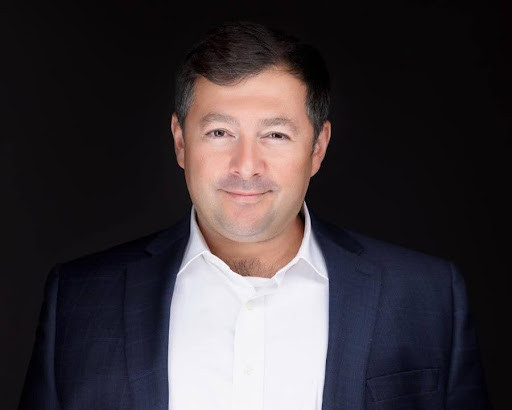As the 12th anniversary of Superstorm Sandy approaches, a devastating event that caused over $70 billion in damage, with less than $9 billion covered by FEMA's National Flood Insurance Program (NFIP), it's an opportune time to reflect on the current state of the flood insurance industry and consider ways to improve it. The NFIP has long dominated this sector, offering taxpayer-subsidized coverage that seemed sufficient until catastrophic losses in the 21st century exposed its shortcomings. After Hurricane Katrina in 2005 and Superstorm Sandy in 2012, it became evident that the premiums collected were insufficient to cover the incoming losses.
As a result, the NFIP had to borrow from the US Treasury to pay policy claims. The NFIP remains over $20 billion in debt to the Treasury despite Congress canceling $16 billion in 2017 as the former reached its borrowing limit. In response to this financial fallout, the NFIP started to increase rates incrementally. Subsequently, it completely revised its rate structure to align more closely with actuarially sound rates. This change paved the way for a new private flood insurance market to be established, targeting properties that had become overpriced under the new FEMA rates. However, this shift only reduced FEMA's market share, with limited new premiums entering the market.
Challenges in Flood Insurance
One of the problems with flood insurance is that the premiums insurers can collect from policyholders usually fail to cover the vast damages caused by flooding. Floods can damage homes, cars, businesses, and public infrastructure, devastating entire regions and economies. To remain solvent, insurers have stopped offering flood insurance and excluded it from homeowners' and commercial insurance policies. In response, Congress created the NFIP in 1968 to tackle this problem.
Property owners did not immediately jump at the opportunity to purchase flood insurance, mostly due to a lack of education about its importance. Few who recognized their flood risk bought coverage, but most did not, resulting in a high-risk pool destined for tremendous losses. The NFIP, now operated by FEMA, offers flood insurance to property owners directly and through about 50 Write Your Own Program (WYO) providers. These providers are middlemen who do not bear any risk of loss and only take a percentage of the premium. The WYO distribution channel was added in 1983 to better promote the flood program and increase NFIP participation.
In 1973, Congress passed the Flood Disaster Protection Act (P.L. 93-234), requiring property owners in Special Flood Hazard Areas (SFHAs) with federally backed or regulated mortgages to purchase flood insurance. The NFIP quickly grew to dominate the flood insurance market. By 1979, it had approached 2 million policies. By 2005, the NFIP had nearly 5 million policies. Few private carriers lingered around in the space to offer limited alternatives and provide excess coverage beyond the NFIP's limits.
Numerous reforms and rollbacks occurred over the next decade and a half, culminating in a new rate structure—dubbed Risk 2.0—which was fully implemented in 2022. It calculates premiums based on specific property characteristics and locations, resulting in substantial premium increases for many current and new property owners. Guard rails were set up to limit the increases to existing customers over time, while new purchasers had to accept the new full pricing immediately.
Industry Insiders
"Superstorm Sandy was one of the most devastating natural disasters to hit New York City and the surrounding areas, and it felt like no one was prepared for it," said Eugene Podokshik, then an insurance agency owner, who witnessed the lack of preparedness firsthand. Living in the city at the time, Podokshik assisted vulnerable residents in southern Brooklyn and Far Rockaway, Queens. He scaled high-rise towers for two weeks, delivering medicine and food supplies to elderly residents who could not leave their buildings as there was no electricity to power the elevators. Many neighborhoods were completely destroyed, and recovery took years.

After founding a successful property and casualty insurance agency in 2012, which he later sold to a private equity-backed firm, Podokshik dedicated himself to educating clients and his local community to prepare for various future losses by creating emergency preparedness plans. He then founded the Emergency Risk Management Association (ERMA), a nonprofit organization poised to bring awareness of various risks and how to mitigate them. Podokshik organized meetings throughout the city and brought emergency responders, fire departments, coast guards, EMS, and many other emergency management personnel to meet with stakeholders across the city. After several years of promoting preparedness, ERMA was repositioned to provide assistance with risk management to the education sector.
Following the aftermath of Superstorm Sandy, it became evident that many residents and businesses Podokshik had helped did not have flood insurance. Their struggles continued long after the waters receded. Without insurance, many were left to seek financial assistance from FEMA or rely on their families and neighbors. Many of those affected were not in flood zones. Therefore, they did not believe they had flooding risk and did not purchase flood insurance. Some knew they were in flood zones but, nevertheless, did not buy the coverage. Even after FEMA revised New York City's flood maps in 2015 to include more high-risk areas, Podokshik observed that a significant portion of his clients still opted not to purchase flood insurance.
Instead of lowering rates to entice more consumers, the NFIP raised premiums up to 25% per year for some property types. This further crushed customers who were required by their lenders to maintain this coverage or otherwise face defaults with their lenders. By 2017, this rate hike led to an opportunity for private insurers to enter the market and compete with the NFIP by offering lower premiums to lower-risk properties.
One such insurer was Flood Risk Solutions (FRS), founded by Podokshik and industry colleague Brendan Moeller. FRS was established as a managing general agency (MGA) with several proprietary binding flood products and as a wholesale insurance provider offering products of other domestic and international insurers to agents and brokers, who, in turn, offer the solutions to their residential and commercial clients.

Securing cover holder status with Lloyds of London and obtaining authority from a key syndicate to sell flood insurance, the visionaries devised a plan to use technology to distribute flood insurance products to consumers. The tech evolved into a full-blown flood multi-rater with advanced analytics that require minimal keystrokes, often only entering the property's address. It offers real-time quotes in mere seconds from virtually the entire private flood marketplace, including the NFIP. This eliminates the need for agents to shop for their clients elsewhere.
FRS also launched Parametric Risk, which ventures into the evolving niche of flood parametric insurance products. Parametric Risk now offers several products that have claim triggers based on gauge readings and satellite imagery and include instant claim payments. Earlier in 2024, FRS was sold to a national insurance provider, XPT Specialty.
Current State
The overall landscape in which FRS operates is thriving, albeit not as much if inflation is taken into consideration. A 2024 report shows that the NFIP collected about $4.3 billion in annual premium revenue and has about five million policies in force. Meanwhile, the private flood insurance market collects over a billion in premiums and has grown to over 700,000 policies.
These figures do not eliminate the question of why flood insurance adoption remains limited. "We can make consumers aware that as much as 40% of flood claims occur outside the high-risk areas. For example, in 2016, Louisiana experienced heavy rain in a non-flood zone and received equivalent to three times the amount of rain during Hurricane Katrina, with 146,000 homes damaged and over $10 billion of economic impact. We can share many more examples, but the decision is up to the consumer. Most just don't think it'll happen to them. They don't want to spend any more money, and they are willing to roll the dice," states Podokshik.
Suggestions
Many recommendations have been made for FEMA Congressional Reforms, focusing on affordability, fairness, risk reduction, solvency, and education. However, increasing the take-up rate for flood insurance is essential for long-term sustainability.
Over the past 50 years, the NFIP has collected $60 billion in NFIP premiums. However, it has paid $96 billion in costs, including losses, operating expenses, and interest. Doubling the size of the market from $5 billion to $10 billion could help cover claims over time, easing the burden on taxpayers. Increasing participation in the flood insurance market would also lead to more financial protection for property owners and a healthier overall industry.
Podokshik offers several suggestions to achieve this. Firstly, extend mandatory flood insurance to all mortgage borrowers, not only those in SFHAs but with small coverage limits to keep premiums low. For instance, a $10,000 limit could cost as little as $50. This would encourage discussions with insurance agents about appropriate coverage limits.
Secondly, parametric insurance should be incorporated into policies where claims are automatically triggered by measurable events like gauge readings. Offering instant payments without needing to file claims or deal with adjusters can change the mindset of consumers.
Another suggestion is to reduce the minimum flood insurance premium to $100 to attract more customers, even if this means lowering coverage limits or increasing deductibles. As assets grow, consumers will likely purchase higher limits, contributing more premiums to the market.
Podokshik also encourages private insurers to share risks with the NFIP through partnerships. Doing so would allow the former to offer broader coverage at lower costs. This could be modeled after the Terrorism Risk Insurance Act, where private carriers receive government backing for catastrophic losses.
Regarding raising awareness, Podokshik advocates for offering higher commissions to insurance agents and brokers for selling flood insurance and scaling back the compensation over time. This would incentivize agents to promote flood insurance more aggressively.
On the other hand, to address the issue of limited flood insurance adoption, Podokshik states, "I think it's best if we provide additional coverage options like extra expense, basement, and offer replacement cost coverage on all policies. This would encourage them to purchase flood insurance."
Last but not least, the industry expert calls for demystifying NFIP's Risk 2.0 rating and making flood risk data available to consumers. "It would be very nice for consumers to know what their true risk of flooding is," says Podokshik. "You can easily find the flood zone you are in, which only gives a general probability of the risk." Offering elevation certificates and flood reports at lower costs could help consumers make informed decisions about their flood risk and insurance needs.
Ultimately, as the NFIP and private flood insurance markets grow and mature, competition will drive down costs, benefiting consumers and taxpayers. "We may never be fully prepared for another Superstorm Sandy," Podokshik supplies. "But perhaps we can better manage its financial ramifications and have more property owners protected by flood insurance."







